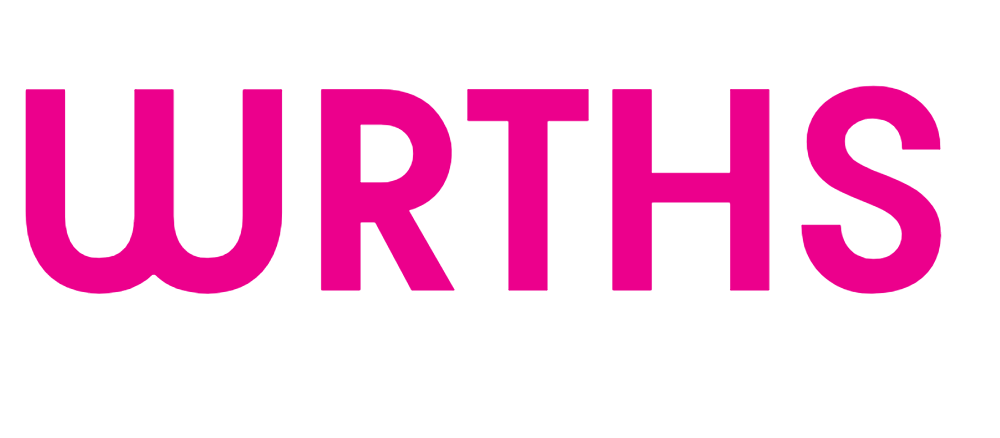In their real estate endeavors, celebrities favor sought-after locations such as Beverly Hills, Malibu, New York City, and exclusive international spots. They aim to expand their property portfolios strategically, leveraging the allure of prestigious addresses for profitable returns. A-listers like Leonardo DiCaprio, Oprah Winfrey, and Jennifer Aniston diversify their investments across multiple high-profile destinations, ensuring a robust and diverse real estate footprint. These stars' choices reflect a calculated approach to wealth management through luxury property holdings. Understanding where celebrities choose to invest can provide valuable insights into lucrative real estate markets and prime investment opportunities.
Key Takeaways
- Celebrity hotspots: Beverly Hills, Malibu, New York City, Bel Air, London.
- A-list celebrity properties: Leonardo DiCaprio, Oprah Winfrey, Jennifer Aniston.
- Exclusive luxury estates: Marc Jacobs, Shania Twain, Bruce Willis.
- Star-studded property portfolios: Drake, Elton John, Canadian billionaires.
- Iconic celebrity real estate ventures: Leonardo DiCaprio, Oprah Winfrey, Arnold Schwarzenegger.
Celebrity Hotspots for Real Estate Investments
Where do celebrities often flock to for their real estate investments in the luxury market?
Celebrity homes are often found in exclusive neighborhoods such as Beverly Hills, Malibu, and New York City. These luxury real estate hotspots attract A-listers looking for prestigious addresses, privacy, and opulent surroundings.
Bel Air, Tribeca, and the Hamptons are among the top choices for celebrities seeking prime properties with all the lavish amenities money can buy. Additionally, stars venture beyond the U.S. borders, investing in properties in international locations like London, Paris, and the Caribbean islands.
From gated communities to private islands and luxury resorts, celebrities spare no expense when it comes to securing their dream homes in sought-after destinations like Aspen, Miami Beach, and the French Riviera. These high-profile real estate investments not only offer a place to call home but also serve as lucrative assets for the rich and famous.
A-List Celebrity Properties Around the Globe

A-List celebrities around the globe showcase their opulent lifestyles through their impressive real estate portfolios. Leonardo DiCaprio, known for his environmental activism, owns luxury properties in New York, California, and Belize. His most notable investment is the eco-resort project on Blackadore Caye, emphasizing sustainable living.
Oprah Winfrey's real estate holdings, estimated at $200 million, include main residences in Montecito and additional homes in Maui, Colorado, and Washington state, reflecting her diverse tastes and commitment to luxury living.
Jennifer Aniston's real estate portfolio boasts properties in Bel Air, Beverly Hills, and New York City, meticulously designed for comfort and style.
Arnold Schwarzenegger, with an estimated net worth of $400 million, has diversified his investments into multi-unit apartment buildings and commercial real estate properties on Main Street in Santa Monica, showcasing his business acumen in the real estate market.
Ellen DeGeneres, a savvy real estate investor, is renowned for flipping luxury properties, having successfully bought, renovated, and sold over 20 properties since 2003, expanding her profitable and extensive real estate portfolio.
Exclusive Luxury Estates Owned by Celebrities

Marc Jacobs, Shania Twain, Bruce Willis, Robert Redford, and Carlo Ponti are just a few celebrities known for their impressive real estate portfolios.
From luxurious beachfront estates in the Bahamas to sprawling properties in New York and Rome, these stars have made significant investments in exclusive properties around the globe.
Their mansion highlights and famous real estate investments showcase the grandeur and sophistication that define celebrity-owned luxury estates.
Celeb-Owned Mansion Highlights
Famous personalities around the world showcase their opulent lifestyles through a collection of exclusive luxury estates owned by celebrities. These celeb-owned mansion highlights exemplify the allure of luxury homes and the investment prowess of renowned individuals in the real estate market:
- Drake's $88 million Beverly Hills property stands as a proof of his appreciation for luxurious living spaces.
- Elton John's recent acquisition of a Toronto penthouse adds to his impressive portfolio of exclusive properties, reflecting his refined taste in real estate.
- A Canadian billionaire's record-breaking purchase of a Malibu home underscores the enduring appeal of high-end real estate investments.
- Adam Levine's successful sale of an $18 million estate highlights the lucrative nature of luxury property transactions in the celebrity sphere.
Each of these celebrity-owned properties offers a glimpse into the grandeur and sophistication that define the world of luxury real estate investments.
Star-Studded Property Portfolios
With their lavish tastes and substantial wealth, celebrities like Leonardo DiCaprio, Oprah Winfrey, Jennifer Aniston, Arnold Schwarzenegger, and Rihanna have amassed impressive portfolios of exclusive luxury estates in prime locations worldwide.
Leonardo DiCaprio's investments span from New York to California and Belize, where he's working on an eco-resort project on Blackadore Caye.
Oprah Winfrey's real estate empire is estimated at $200 million, with a primary residence in Montecito valued at over $100 million.
Jennifer Aniston's properties in Bel Air, Beverly Hills, and New York City are meticulously designed for comfort and style, reflecting her estimated net worth of $300 million.
Arnold Schwarzenegger wisely ventured into multi-unit apartment buildings early on and now owns commercial real estate on Main Street in Santa Monica, with an estimated net worth of $400 million.
Rihanna's property portfolio includes locations in Barbados, London, and Los Angeles, showcasing her penchant for luxury real estate in prime spots, aligning with her estimated net worth of $600 million.
These celebrities have strategically diversified their investments in the real estate market, securing prime assets in sought-after locations.
Famous Real Estate Investments
Drake's $88 million property in Beverly Hills solidifies his status as a savvy investor in luxury real estate. Celebrities across the globe are making headlines with their exclusive real estate investments, showcasing their penchant for opulent properties.
From penthouses in Toronto to Mediterranean-style mansions in Florida, these famous personalities spare no expense when it comes to acquiring luxurious homes. Here are some notable celebrity real estate investments:
- Elton John's penthouse purchase in Toronto
- Canadian billionaire's record-setting Malibu home acquisition
- Adam Levine's lucrative $18 million estate sale
- Billy Joel's opulent $54.9 million Mediterranean-style mansion in Florida
With properties in cosmopolitan hubs like New York and Los Angeles, these celebrities aren't only investing in real estate but also solidifying their status as connoisseurs of luxury living. The allure of exclusive properties continues to attract wealthy individuals, making celebrity real estate transactions a hot topic in the industry.
Celebrity-Owned Mansions and Penthouses

Elton John recently acquired a luxurious penthouse in Toronto for $8.6 million, offering panoramic views of the city skyline and Lake Ontario. The property represents the epitome of luxury living, boasting exquisite design features and high-quality amenities. Let's take a closer look at some other celebrity-owned mansions and penthouses that redefine opulence:
| Celebrity | Location | Property Features |
|---|---|---|
| Drake | Beverly Hills | 12,500-square-foot main house, basketball court, 4,000-square-foot master bedroom suite |
| Canadian Billionaire | Malibu | 15,000-square-foot mansion, 10 bedrooms, 14 bathrooms |
| Adam Levine | Unknown | 9,000-square-foot main house, two-story guest house, tennis court |
| Billy Joel | Florida | Mediterranean-style mansion with seven bedrooms, wine cellar, movie theater, private dock with yacht access |
These celebrity-owned properties are not just homes; they are statements of wealth and prestige, embodying the ultimate in luxury real estate.
Top Celebrity Real Estate Investments

Amassing a portfolio of prestigious properties across the globe, various A-list celebrities have solidified their status as top players in luxury real estate investments.
- Leonardo DiCaprio strategically invests in properties in New York, California, and Belize, with a notable eco-resort project on Blackadore Caye.
- Oprah Winfrey's impressive real estate holdings, estimated at $200 million, include a stunning main residence in Montecito valued at over $100 million.
- Jennifer Aniston's real estate ventures span Bel Air, Beverly Hills, and New York City, showcasing properties designed for both comfort and style, aligning with her estimated net worth of $300 million.
- Arnold Schwarzenegger's early investment in a multi-unit apartment building paved the way for his ownership of commercial real estate in Santa Monica, reflecting his estimated net worth of $400 million.
These celebrities strategically invest in luxury real estate, with locations like Beverly Hills and New York being favored spots for their high-end property acquisitions.
Lavish Celebrity Homes for Sale

Celebrities are constantly on the lookout for exclusive properties to add to their star-studded portfolios. From Drake's opulent Beverly Hills mansion with a 4,000-pound bathtub to Elton John's luxurious Toronto penthouse offering stunning city skyline views, these lavish homes for sale cater to the elite.
With amenities like private beaches, infinity pools, and wine cellars housing thousands of bottles, these properties exemplify the epitome of luxury living for the rich and famous.
Exclusive Celebrity Mansions
In the world of exclusive celebrity mansions, opulence and luxury meet at the intersection of real estate dreams. Celebrities spare no expense when it comes to their lavish homes, each one a masterpiece in its own right. Here are some remarkable examples:
- Drake's $88 million Beverly Hills property boasts a 50,000 square foot mansion with incredible amenities such as an indoor swimming pool, basketball court, and a recording studio.
- Elton John's Toronto penthouse purchase includes a luxurious two-story suite offering panoramic views of the city and Lake Ontario.
- A Canadian billionaire shattered records in Malibu with a $75 million home sale, showcasing the pinnacle of luxury in the area.
- Adam Levine's $18 million estate in Beverly Hills was a modern marvel, featuring a resort-style backyard, expansive living spaces, and a state-of-the-art kitchen.
These exclusive celebrity mansions redefine luxury living, embodying the epitome of sophistication and extravagance.
Star-Studded Property Portfolio
Star-Studded Property Portfolio showcases a selection of lavish celebrity homes currently available for sale, each epitomizing luxury and exclusivity in the real estate market.
Drake's $88 million Beverly Hills property boasts a 50,000 square foot mansion with amenities like a basketball court and a 4,000 square foot master bedroom suite.
Elton John recently acquired a penthouse in Toronto for $8.1 million, featuring 5,000 square feet of luxurious living space and breathtaking city views.
In Malibu, a Canadian billionaire set a record with a $177 million home sale, presenting a 10-bedroom estate with a 5,000 square foot master bedroom and a 15,000 square foot entertainment area.
Adam Levine's former Beverly Hills estate, sold for $18 million, spanned 3.6 acres and included a 12,000 square foot main house, two guest houses, a tennis court, and a resort-style pool.
Billy Joel's $54.9 million Mediterranean-style mansion in Florida boasts 9 bedrooms, a recording studio, a wine cellar, a boat dock, and a pool overlooking the ocean, making it a coveted gem among luxury homes on the market.
Iconic Celebrity Real Estate Ventures

Iconic figures in the entertainment industry have made notable forays into the world of luxury real estate. These celebrities haven't only showcased their talent on screen but also demonstrated their prowess in the domain of property investment. Let's explore the iconic celebrity real estate ventures:
- Leonardo DiCaprio: Known for his environmental activism, DiCaprio owns properties in New York, California, and Belize, with a standout eco-resort project in Blackadore Caye.
- Oprah Winfrey: With an estimated $200 million in real estate holdings, Winfrey's main residences in Montecito and Maui, along with homes in Colorado and Washington state, reflect her taste for luxury.
- Jennifer Aniston: Renowned for her roles on and off the screen, Aniston's real estate portfolio boasts properties in Bel Air, Beverly Hills, and New York City designed for comfort and style.
- Arnold Schwarzenegger: Beyond his action hero persona, Schwarzenegger's early investments in multi-unit apartment buildings and commercial real estate properties in Santa Monica highlight his savvy in the celebrity real estate market.
Celebrity-Approved Luxury Properties Showcase

Shifting from the realm of iconic celebrity real estate ventures, the focus now moves to the Celebrity-Approved Luxury Properties Showcase, highlighting exclusive residences owned by notable figures in the entertainment industry.
Marc Jacobs is the proud owner of a 4,346 square foot property located at 68 Bethune Street within NYC's Superior Ink complex, a creation of the renowned architect Robert A.M. Stern.
Shania Twain's Bahamian estate at 14 Ocean Drive boasts six bedrooms and six bathrooms situated on a one-acre beachfront plot, offering a luxurious retreat.
Bruce Willis' property in Bedford Corners spans an impressive 22.6 acres, featuring four residences, a nearly 9,000 sq ft main house, a saltwater pool, and a tennis court for recreational activities.
Robert Redford's Napa Valley estate, known as Danza del Sol, encompasses a 10-acre property with a main house, artist studio, garages, pool, and hot tub, providing a serene escape.
Carlo Ponti's Rome estate on Appian Way showcases a main villa with four en suite bedrooms, a Roman vault, and a second villa built on ancient Roman quarry ruins, exuding historical charm.
These celebrity-approved luxury properties exemplify the allure and sophistication of investing in real estate.
Extravagant Homes of the Rich and Famous

Featuring extravagant homes owned by the rich and famous, the luxury real estate market showcases opulent properties that exude grandeur and sophistication.
- Drake's $88 Million Beverly Hills Estate: Celebrities like Drake are known for investing in lavish homes, with his $88 million Beverly Hills property being a prime example of luxury real estate acquisitions in the celebrity world.
- Elton John's Toronto Penthouse: Elton John's purchase of a Toronto penthouse made waves in the luxury real estate market, demonstrating the high standards set by celebrities when it comes to their residential choices.
- Canadian Billionaires in Malibu: Canadian billionaires have set records with their extravagant Malibu home purchases, illustrating the level of opulence that defines celebrity real estate investments.
- Adam Levine's $18 Million Sale: The recent $18 million sale of Adam Levine's estate reflects the high-value transactions that are commonplace in the world of celebrity real estate, where luxury homes are bought and sold with staggering price tags.
Frequently Asked Questions
Which Celebrity Has the Largest Real Estate Portfolio?
Oprah Winfrey boasts the largest real estate portfolio among celebrities. With properties in Montecito, Maui, Colorado, and Washington state valued at over $200 million, she leads the pack. Her diverse investments underscore her financial acumen and strategic approach to real estate.
Other notable celebrities like Leonardo DiCaprio, Jennifer Aniston, Arnold Schwarzenegger, and Rupert Grint also hold impressive real estate portfolios but fall short of Oprah's extensive holdings.
How Do Celebrities Buy Real Estate?
Celebrities buy real estate through trusted agents specializing in luxury properties. They often diversify by purchasing multiple properties in various locations.
Some opt for eco-friendly or resort investments that align with their values. Financing methods include cash, mortgages, or partnerships with developers.
Celebrities may also engage in real estate development to customize properties. Overall, they strategically invest in real estate to expand their portfolios and meet personal preferences and specifications.
Who Has the Biggest Real Estate Portfolio?
When considering the biggest real estate portfolio among celebrities, Tyler Perry stands out with an impressive empire valued at over $1 billion.
Perry's holdings include a sprawling estate in Atlanta covering more than 1,000 acres and an investment in a private island in the Bahamas. His strategic acquisitions reflect a shrewd approach to wealth management and long-term financial security for his family.
As Perry himself stated, 'Real estate is a tangible asset that provides stability and growth potential.'
What Actor Owns the Most Real Estate?
George Clooney stands out as an actor who holds an extensive real estate portfolio. His properties in various countries, including Italy, England, and Los Angeles, reflect a strategic approach to securing his family's future.
With an estimated net worth of $500 million, Clooney makes significant global real estate investments. His diverse portfolio showcases a mix of international estates and Hollywood residences, serving both as investments and personal retreats.
Conclusion
In the world of luxury real estate, celebrities are known to make savvy investments in properties that not only provide a glamorous lifestyle but also yield impressive returns.
According to a recent report by Forbes, celebrity-owned homes have seen an average appreciation of 7% annually over the past decade, outperforming many other traditional investment options.
This highlights the astute financial decisions made by celebrities when it comes to their real estate portfolios.










